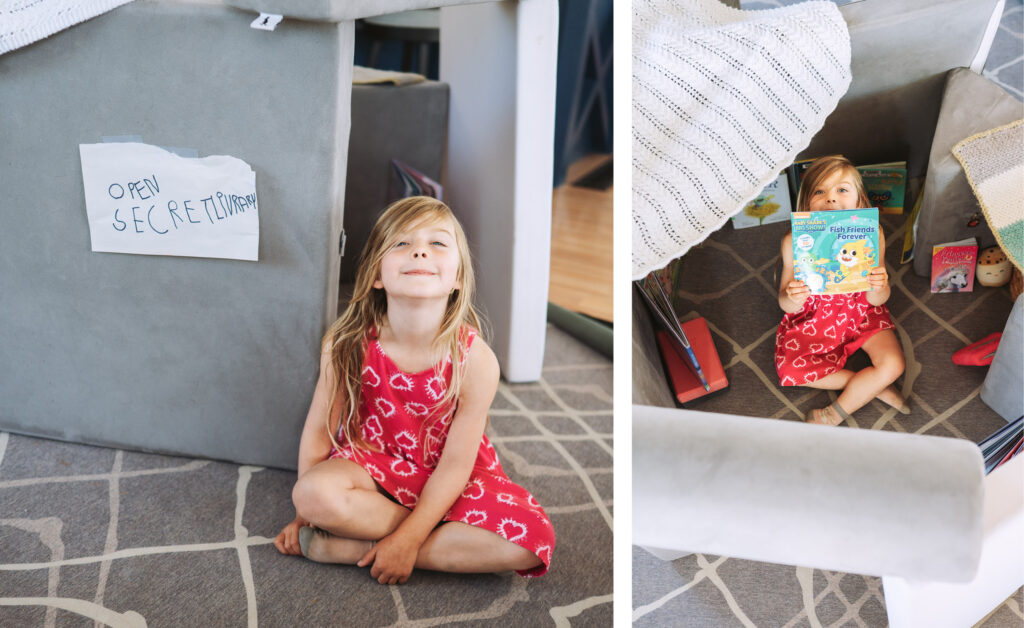Words Cassidy Nunn
Photo Nunn Other Photography
“Open Secret Livrary” reads the sign in my five-year-old daughter’s crayoned prose. Earlier in the day while I washed dishes, she had me call out the letters so she could carefully craft her sign. It’s now taped to the side of a cushion from her play couch which she has standing on its side next to a few other large cushions to create an enclosed fort in the middle of our living room. Another sign with several tape pieces holding it up on the entrance to the fort says “Secret library closed.”
“Oh, is the library actually closed?” I ask her while perched on my hands and knees, half-way through the entrance to her library. “No, YOU can come in, Mama, but NO DOGS ALLOWED!” she shouts, pointing at our puppy who is pushing his nose in beside me, eager to also experience the wonder of the secret library. Inside, she’s placed her library books all around the walls of the fort and hung blankets to create a canopy over one corner for a reading nook. Stuffies and other random toys adorn the floor and my wicker laundry basket is upside down, transformed into an important wall of the fort. Her younger sister is napping but I know as soon as she wakes up she’ll try to enter the secret library and will also most likely be told off, just as the puppy was.
She continues to take me on a tour of her library, explaining her decisions around which books she chose to include and why, which ones could be checked out and which ones had to stay, what areas were for reading and how long exactly I was permitted to visit. She had an entire narrative formed around this secret library, as if she’d been thinking about it for days. She begged for it to stay standing overnight and not be cleaned up as we usually do at the end of the day.
Fort building and other such forms of imaginative play have become an important part of my kids’ daily rhythms in our household. At five and two years old, their brains are continuing to develop and pretend play is a great way for them to learn critical thinking, how to navigate relationships and foster cooperation (such as allowing little sister to also enter the secret library!). I love seeing what their imaginations produce, their innovation and discovery of the world around them. So often their favourite “toys” continue to be the most simple of household items: couch cushions becoming a train, a cardboard box transforming into a ferry, a stick converting to a fishing rod. In 2008, the stick was actually added to the National Toy Hall of Fame at the Strong National Museum of Play in Rochester, New York.
I had a very vivid imagination as a child and, when left to my own devices, I too remember creating forts and massive set-ups with my toys, inventing characters and even an imaginary horse that I looked after daily and “rode” in my backyard. As an adult, we often lose that creative mindset. It can be challenging to access that part of our brains when our days are filled with appointments, worries, long to-do lists and a gazillion household tasks that can often feel far more pressing than taking time to stop and allow ourselves to enter our children’s made-up world of play. Embracing that imaginative state and experiencing an alternate reality inside your own living room can be a refreshing break from the daily grind. I’ve found it takes a bit of practice, and I don’t always enjoy it at first, especially if my child is barking orders and rules for how to exist in said imaginative world. However, inviting play into my life again in a less structured way has allowed me to see the world from my kids’ view and if that means an on hands and knees, invite-only entry to a Secret Livrary, I’m here for it.




